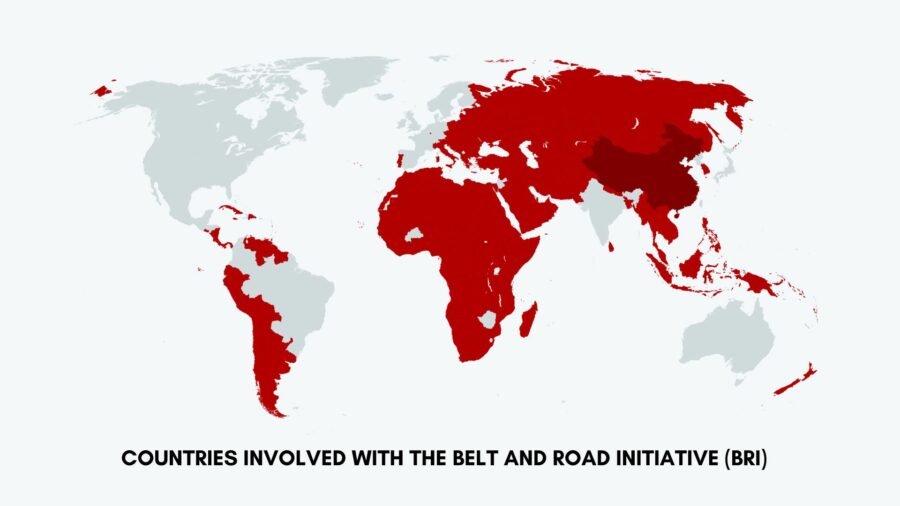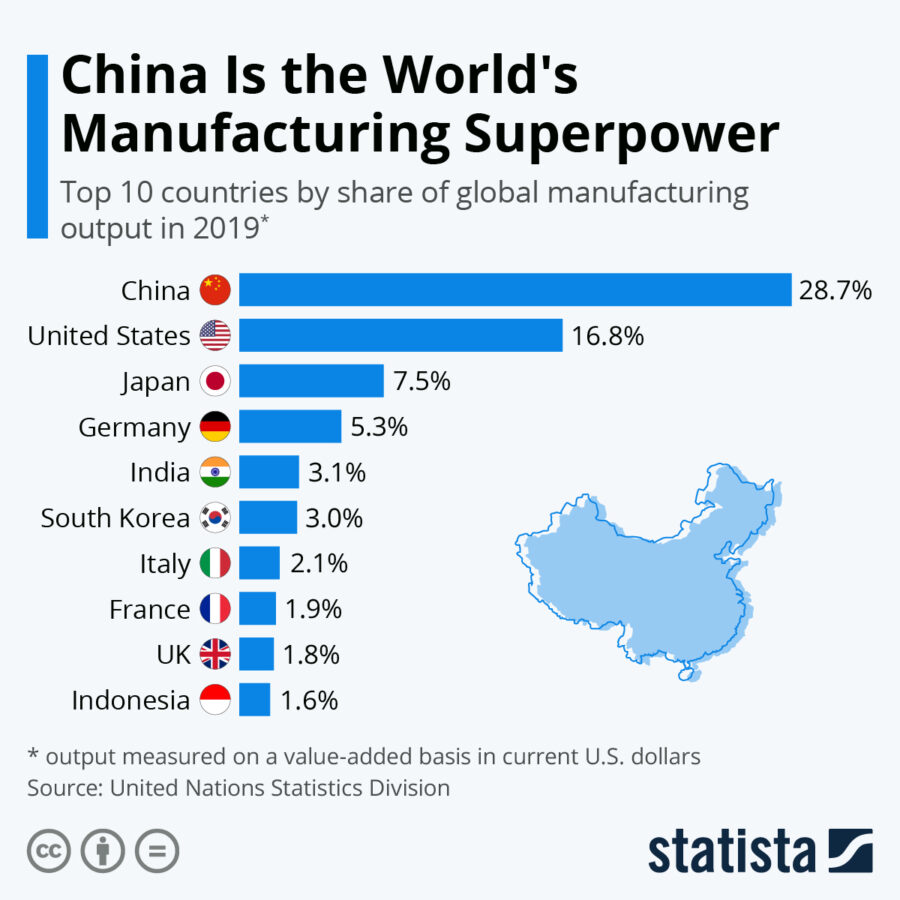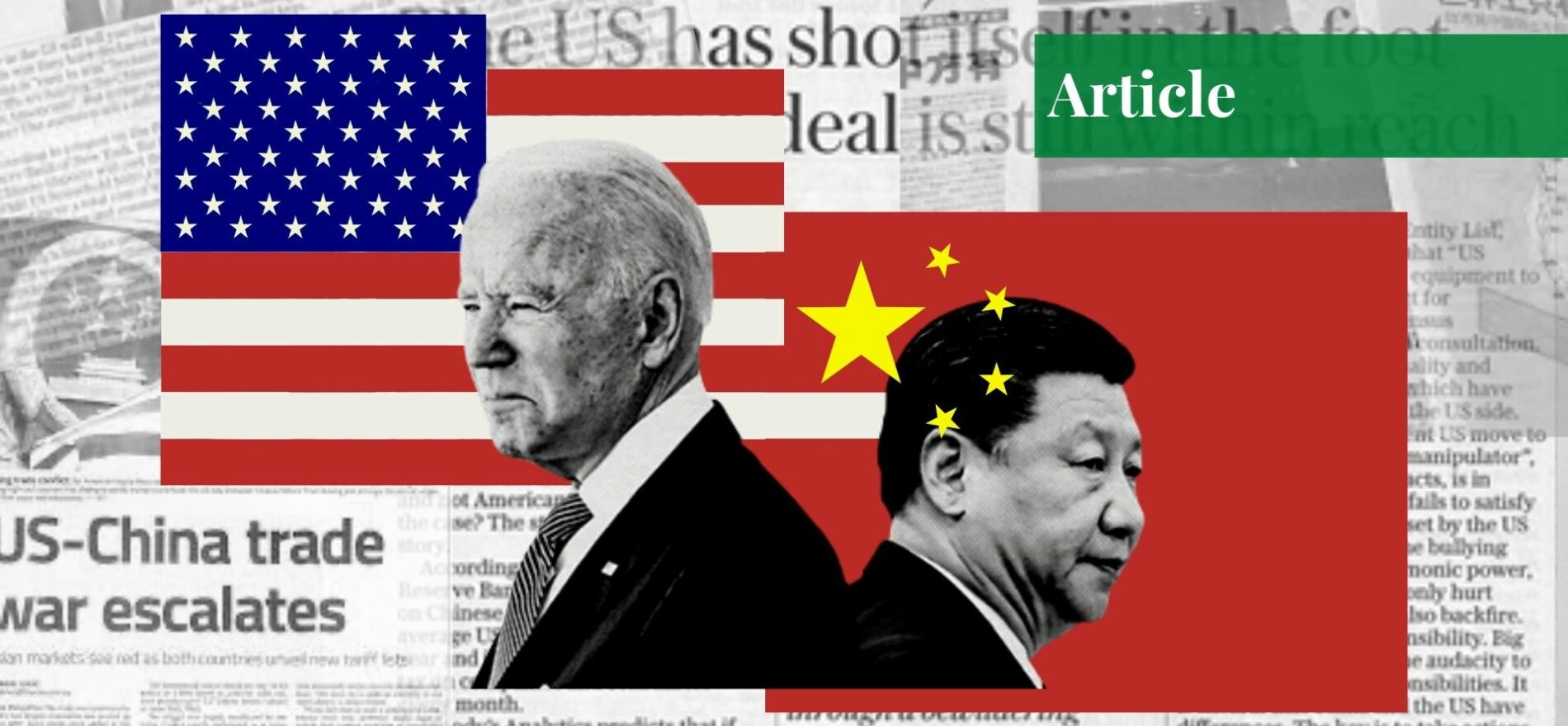Ayesha Zahoor has completed her master's in International Relations from NUML. She is a critical analyst and has been published in "The Express Tribune." She is currently working as a lecturer at Askaria College.
The Shifting Status Quo
Pankaj Ghemawat, an Indian-American economist, business strategist, and professor, posited, “The East is progressively showing its dominance over the West in terms of knowledge production and international trade.” This assertion by Ghemawat is evident in the 21st century, as we observe the influence of the rising China, the re-emergence of Russia, and the proactive transition of Middle Eastern nations from Western dominance.
The mounting influence of China and Russia over global political dynamics is poised to upend the status quo, akin to executing a chess move in reverse. Significant Middle Eastern powers like Saudi Arabia, the UAE, Iran, Iraq, and other nations are also experiencing transformations as they detach themselves from Western influence. The proxy conflicts orchestrated by the United States in various regions to manipulate internal politics have ultimately impeded the advancement of these nations.
Is China Replacing the US?
Countries have experienced significant devastation due to unquestioningly adhering to America’s self-serving policies. In contrast, China is actively engaged in fostering global cooperation through its captivating initiatives that seek to bolster the progress of developing nations. A notable example is China’s “Poverty Reduction Pilot Project” implemented in Laos, Myanmar, and Cambodia. This endeavor strives to uplift the economic conditions in these nations by promoting the adoption of advanced agricultural technologies among farmers, thereby enhancing their productivity.
As part of this partnership, China utilizes the natural resources available in these countries, which include abundant reserves of oil, gas, minerals, and precious stones. Furthermore, China is actively contributing to the economic growth of various African states. By the conclusion of 2021, China had deployed 81 agro-technological teams comprising 808 experts to various African countries, affirming its commitment to supporting agricultural advancements.
Moreover, China actively assisted in establishing 22 agro-technological pilot projects, specifically designed to enhance crop yields. This technology transfer extended beyond Africa to Asian nations like Pakistan, Sri Lanka, and Bangladesh, with the objective of instilling confidence among farmers regarding their crop productivity. The generous assistance of China in these areas has significantly contributed to its rising global influence. Furthermore, China implemented an interest-free loan program for developing countries through the Asia Development Bank (ADB).
The economic support provided by China to various nations has bolstered their alliances with China. In contrast, the United States has also extended economic assistance to countries in previous decades; it often comes with conditions that align with American interests. For instance, during the War on Terror, the United States engaged numerous Asian, African, Central Asian, and Middle Eastern countries in this endeavor.
However, as nations began to comprehend America’s true intentions of exerting influence, they distanced themselves from this agenda. Ultimately, Afghanistan also freed itself from the constraints imposed by American control. After the United States’ withdrawal from Afghanistan and Kabul’s takeover by the Taliban, China and Russia have stepped in to provide political, educational, and developmental assistance to Afghanistan. China, in particular, has expanded its Belt and Road Initiative (BRI) to include Afghanistan.

China is also actively engaging with Central Asian and Eastern European states. For instance, the China-Central & Eastern European Countries’ (CEEC) third expo was recently held in Ningbo, located in East China’s Zhejiang province. This trade expo is expected to create a win-win situation for all participating states.
The Rising China and Its Ties with Saudi Arabia
Both China and Russia are actively exerting their influence in the Middle East by initiating various projects in Saudi Arabia. Notably, the Saudi Vision 2030 aligns with China’s Belt and Road Initiative, facilitating a strong partnership between the two countries. China has made substantial investments in the infrastructure, energy, technology, and manufacturing sectors in Saudi Arabia. Chinese companies have played a significant role in the construction of major projects like the Riyadh Metro and the Jizan Industrial City.
The Financial Times, a renowned British daily newspaper, recently published that Saudi Arabia is currently engaged in discussions to become a member of the China-based New Development Bank or “BRICS bank.” This move will strengthen the funding options for Russia, as they are grappling with the consequences of sanctions imposed by the West. This robust cooperation will greatly bolster the ties between Saudi Arabia and China.
Beyond Economy
The rising China has achieved remarkable economic growth over the past few decades to become the world’s second-largest economy. Moreover, China is utilizing its economic strength to expand its influence globally. Besides boosting the economy, China is also making significant advancements in the realm of technology and military modernization to draw level with the United States. It places considerable emphasis on research and development, with notable investments in areas such as artificial intelligence, 5G technology, and advanced manufacturing. By assuming a leadership role in these sectors, China aims to shape global technological standards and gain a competitive edge.

Furthermore, China has been allocating resources to modernize its military capabilities, aiming to augment both its regional and global influence. Through the projection of power and safeguarding its interests, China is expanding its military capabilities, including its naval forces and advanced weaponry, giving it greater strategic leverage. China’s participation in political dynamics extends beyond the economic sphere. For instance, in the Russia-Ukraine conflict, Europe is contemplating China as a potential intermediary to facilitate a ceasefire, given the substantial repercussions of the ongoing war on Europe.
Moreover, China and Russia have acted as mediators to alleviate tensions between Riyadh and Tehran. In a similar manner, Russia and China also contributed to resolving Syria’s internal issues, leading to the reinstatement of Syria within the Arab League. These instances serve as strong evidence highlighting China’s growing influence in the global arena.
To diminish the swat of the USA in the region, China is proactively involved in diplomatic endeavors to broaden its influence. It establishes diplomatic ties, fosters economic partnerships, and offers developmental assistance to other nations. Additionally, China endeavors to enhance its soft power and shape global narratives by promoting its culture, language, and values through initiatives like Confucius Institutes.
Furthermore, the rising China seeks to exert its influence within the Asian Region and addresses territorial disputes with neighboring countries – such as those in the South China Sea – utilizing diverse strategies to assert its claims and extend its control. In addition, China’s growing influence in global politics is evident in its adoption of Petro-yuan trade with numerous countries. This shift has the potential to impact the economic landscape and development of the United States, potentially reducing its dominance in global trade.
Conclusion
The aforementioned developments, combined with evolving trade patterns and geopolitical alliances, indicate a significant shift in the balance of power toward the Eastern hemisphere. As the world witnesses these transformations, the global order continues to adjust and adapt to the emerging realities shaped by the rising influence of the Eastern hemisphere. It’s important to note that perceptions and assessments of China’s dominance vary, and the effectiveness of its strategies is subject to ongoing debate and geopolitical dynamics.
If you want to submit your articles, research papers, and book reviews, please check the Submissions page.
The views and opinions expressed in this article/paper are the author’s own and do not necessarily reflect the editorial position of Paradigm Shift.


















